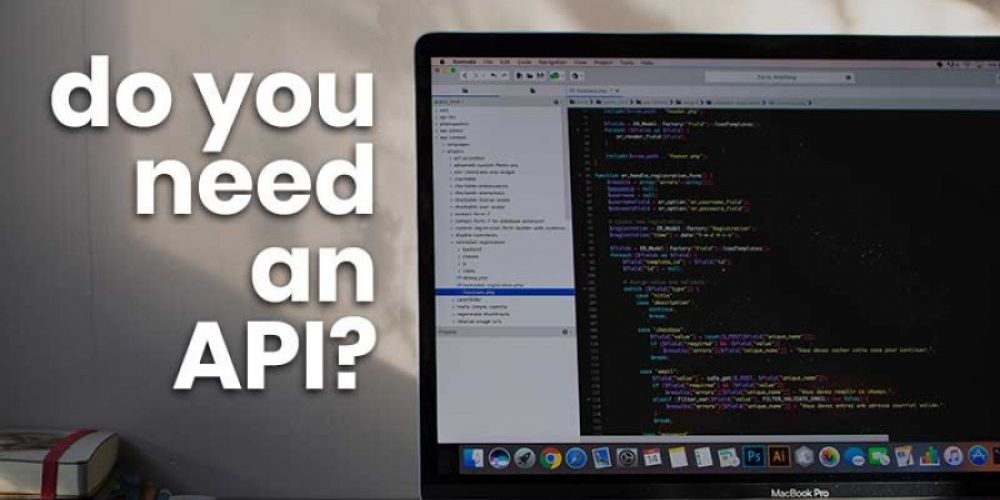
How an API Can Be Leveraged to Boost Sales
WHAT AN API CAN DO: TECHNICAL DETAILS
Before knowing how an API can make you money, you should first understand what an API does. API is a common term used for any component that can be used as a “middleman” between a client application and data (e.g., a third-party developer program and your internal procedures). APIs aren’t only for web applications. They are a part of operating systems that give external software access to low-level computer functionality. APIs can be implemented in many computer systems that allow third-party developers access to internal functionality while still controlling what a third-party can do with low-level features.
With web APIs, the API owner exposes internal business functionality that then calls internal procedures to return data. A software developer can create an application that calls these API endpoints. API endpoints are locations where each functionality is located. In a web environment, endpoints are created in the form of a URL. For instance, if you have an endpoint that gets customer information, your endpoint could look like the following:
yoursite.com/api/customer
The URL should always implement HTTPS as the protocol. HTTPS means that SSL/TLS is used to connect to the API. For cybersecurity purposes, all API endpoints should implement HTTPS to protect data. The URL should have a separate directory for the API, or you can use a subdomain to process API requests. The endpoint name (“customer” in this example) should give a developer an idea of what information will be returned. With this example, the developer can safely assume that customer data will be returned.
The advantage of using an API is that you control the data that can be used and returned. If you have API actions that edit or create data, you can control the way data is manipulated throughout the application. Instead of giving third-party developers full control of your internal data, they get only a portion of it and can only change or retrieve data that you have given them access to.
USING AN API TO INCREASE REVENUE OPPORTUNITIES
At first, it sounds like an API would be nothing more than an added staffing and technology expense. However, it can be a source of revenue and a way to gain brand recognition within a developer community. For an API that can be used in client applications, the best way to make money on it is to charge customers based on a per transaction or per usage subscription. Because a small business will use an API much less frequently than a large enterprise, most API owners have tiered pricing depending on usage. Pricing is set up as a subscription where the cost increases the more API calls a third-party developer needs to use.
Some businesses attract developers to their API by also providing a free tier in a subscription plan. A free tier can be for only a limited amount of time or for a limited amount of API calls. By providing a free tier, the organization offers third-party developers a way to investigate if the API will be useful. It’s also a way to give small developers the ability to work with the API. Small developers are perfect for word-of-mouth references, and many of them can then recommend the API to future employers and other developers.
A good example of a successful revenue-generating API is Salesforce. Salesforce is a CRM that allows businesses to track leads and sales. It provides an API to developers, empowering them to customize their Salesforce instance and how their data is managed and organized, and it’s one of the most popular sales platforms on the market. The Salesforce platform is integrated into enterprise environments where sales and customer service teams rely on it to manage millions in revenue for their organizations. The API has been a very successful revenue stream for Salesforce.
AN API CAN BE AN EFFECTIVE MARKETING TOOL
Marketing can be expensive, but using an API as a marketing tool can indirectly generate sales. By making the API useful to developers, you can market the business as more developers integrate it into client applications. The API must be useful and give developers reasons to integrate it, which means that the API must provide functionality that cannot be easily found in a competitor API or application.
After an API is integrated into a third-party application, it’s difficult to unwind. Most developers will continue to use the API as long as it’s continually maintained, functional and adds value to business software. Developers discuss APIs and third-party software that makes their jobs easier, so providing an API for the general public helps spread the word that your web application is better than your competitor(s). If your competitor has no API, your own API could be a good sales tool that could help influence customers to work with your business.
As developers integrate your API, it will be seen in open-source repositories on sites such as Github, and other developers will review it to see if it can be a good component to add to their own programs. To help with marketing, your own developers can create libraries that make it even easier to integrate your API into third-party programs. The easier you make the API to integrate into third-party programs, the more likely it will be used and made a part of a system for years. With a subscription-based tiering plan, your organization can generate revenue every month based on the frequency of API use.
CONCLUSION
It should be noted that, in order to work to its full potential, the API must always be maintained and running smoothly. Any performance issues can hurt developer interest and could force them to go to a competitor. A well-maintained API can keep developer interest for years, and provide remarkable enhancements to software that works as an effective passive marketing tool that can help your word-of-mouth developer recommendations soar.


